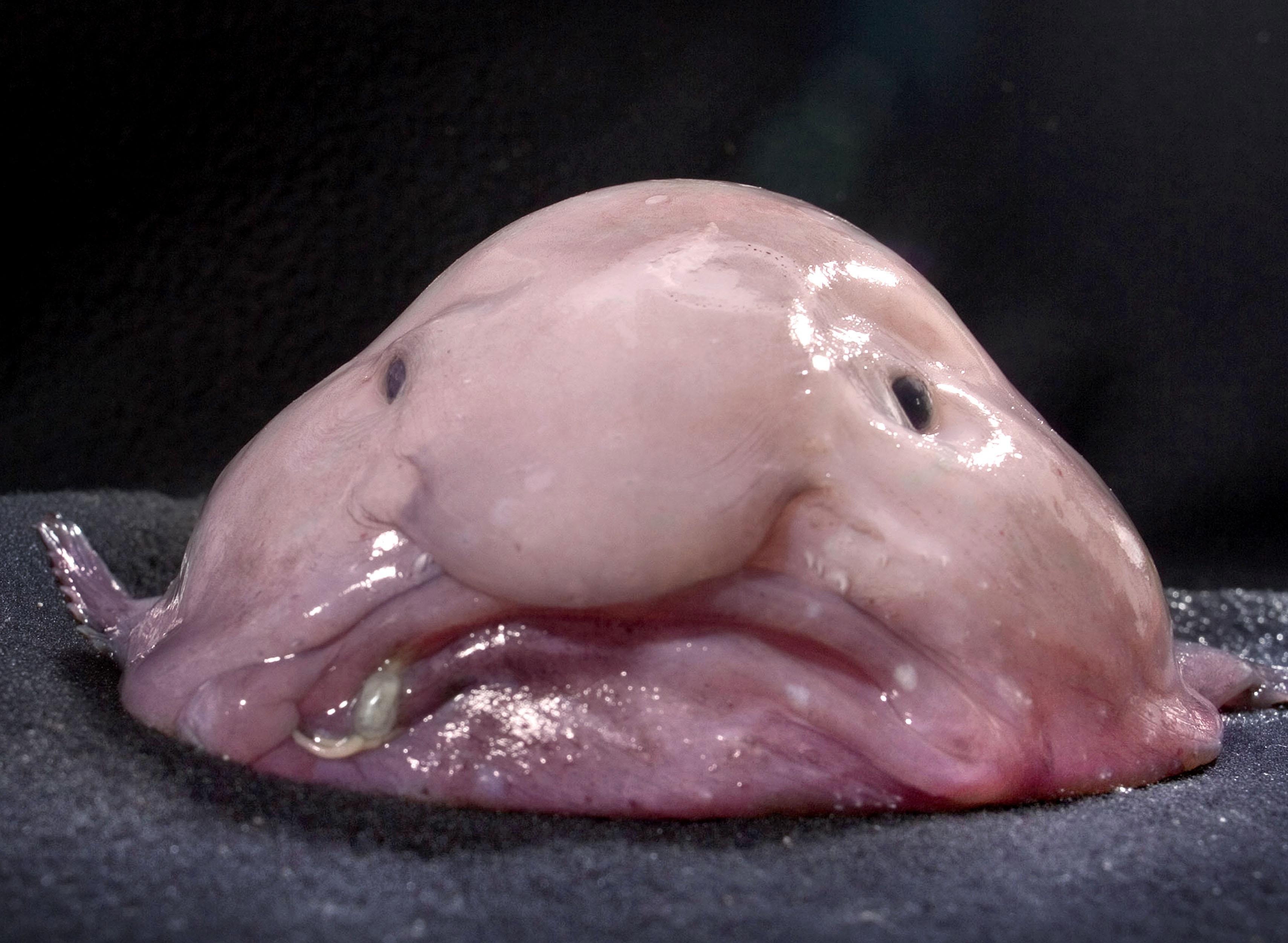Blobfish is a deep-sea fish known for its large mouth and nearly round body. Unlike most fish, the blobfish lacks scales, and its bones are soft. Its body is adapted for survival in the high-pressure environment of the deep sea. When a blobfish is removed from its environment, the change in pressure deforms its body. Its skin becomes loose and its mouth appears to frown. Its body becomes a jellylike, misshapen blob.
The blobfish is a weak swimmer. It usually does not swim at all. Instead, it floats above the seafloor or walks on it using its large pectoral (side) fins. The blobfish may reach about 1 foot (30 centimeters) long.

Scientists know relatively little about the blobfish. It lives at depths ranging from about 2,000 to 4,000 feet (600 to 1,200 meters). Little to no sunlight reaches these depths. The eyes of the blobfish are small. But it can see prey that produce light through an effect called bioluminescence. It also relies on its senses of smell and touch. The blobfish has been found to feed on sea slugs and worms. These may be the only prey too slow to escape the blobfish. The stomach of the blobfish is covered with dark tissue. This tissue ensures that the glow of bioluminescent prey in its stomach cannot be seen from the outside.
Scientists think the blobfish is threatened by deep-sea fishing, specifically trawling. This form of fishing involves dragging nets along the seafloor. Such fishing accidentally catches many blobfish. It also damages their habitat.
